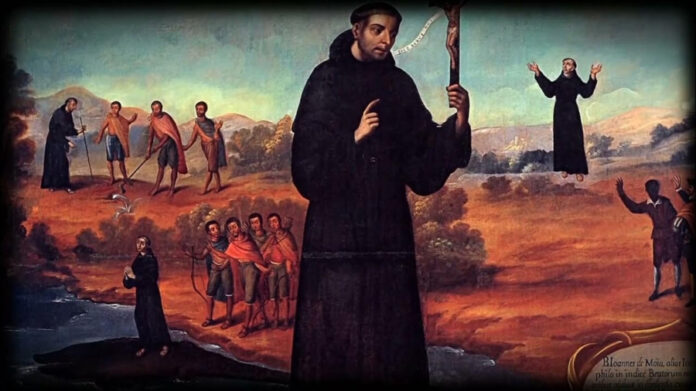by the El Reportero staff
Did you know that the new Pope, Leo XIV, belongs to the Order of Saint Augustine? This fact has generated renewed interest in this religious community, which has had a profound impact on the spiritual and cultural history of Mexico. Below, we explore who the Augustinians are, how they arrived in our country, and what their legacy has been.
Medieval Roots of the Order of Saint Augustine
The history of this order dates back to the Middle Ages, in the Italian region of Umbria, where hermits such as Stephen of Cataste, Hugh of Corbaria, Guido of Rosia, and Peter of Lupocavo sought to unify their religious life under the rule of Saint Augustine of Hippo. In 1243, they petitioned Pope Innocent IV to consolidate the order, which was formalized in 1244. Since then, the Augustinians have followed an ideal centered on evangelical poverty, community life, and Christ-centered interiority.
Along with Franciscans and Dominicans, the Augustinians played a decisive role in the evangelization of 13th and 14th-century Europe. They confronted movements considered heretical, such as the Cathars, whose dualistic spirituality opposed the principles of the Church.
Arrival of the Augustinians in New Spain
In May 1533, the first Augustinian friars arrived in New Spain, just twelve years after the conquest of Tenochtitlan. Their arrival, documented in sources such as México Desconocido, marked the beginning of a profound evangelizing mission. Although the Crown intended for them to head toward Central America, they founded a convent in Mexico City, defying the mandate of the Royal Audience.
The pioneer friars were Juan de San Román, Francisco de la Cruz, Alonso de Borja, Agustín de la Coruña, Jorge de Ávila, and Juan de Oceguera. Faithful to their rule, they practiced prayer, retreat, and meditation. From there, they expanded to regions such as Morelos, Puebla, Guerrero, Michoacán, Hidalgo, and the south of the capital, where they consolidated a lasting spiritual presence.
A mission that encompasses education and culture
The Augustinian legacy is not limited to the religious sphere. One of their greatest contributions was their emphasis on the education of indigenous peoples. As this article highlights, the Augustinians founded schools, libraries, and training centers where trades, literacy, arithmetic, and singing were taught. This comprehensive approach made the order a pillar of intellectual development in the viceroyalty. Historical Challenges and Resilience
After Mexico’s independence in 1821, the order continued operating until the Reform laws, particularly the 1857 Constitution, affected its property and freedom of action. Later, during the Porfiriato, they achieved some recovery, but revolutionary conflicts and the Cristero War (1926-1929) weakened the community again.
The Augustinian present in Mexico
Today, the Order of Saint Augustine remains present in parishes, missionary centers, and schools. Its charism, centered on communion and service, continues to be a spiritual beacon for many people. Despite historical changes, its vocation remains firm: to be a community of interiority, dedication, and pastoral accompaniment.
With an Augustinian pope on the throne of Saint Peter, the order receives new attention, and with it, recognition of centuries of commitment to faith and knowledge.
With reports from México Desconocido.



